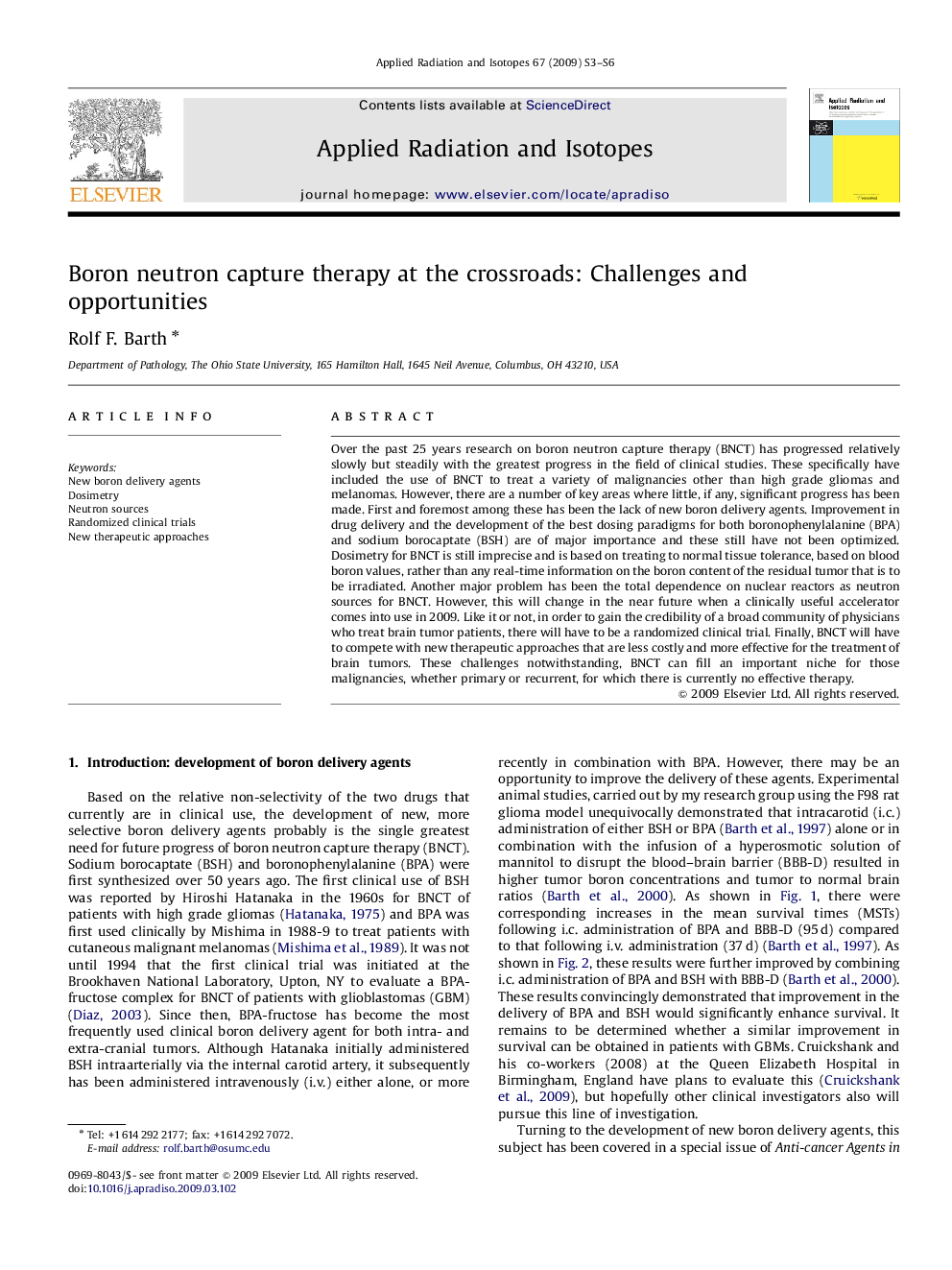| Article ID | Journal | Published Year | Pages | File Type |
|---|---|---|---|---|
| 1876872 | Applied Radiation and Isotopes | 2009 | 4 Pages |
Over the past 25 years research on boron neutron capture therapy (BNCT) has progressed relatively slowly but steadily with the greatest progress in the field of clinical studies. These specifically have included the use of BNCT to treat a variety of malignancies other than high grade gliomas and melanomas. However, there are a number of key areas where little, if any, significant progress has been made. First and foremost among these has been the lack of new boron delivery agents. Improvement in drug delivery and the development of the best dosing paradigms for both boronophenylalanine (BPA) and sodium borocaptate (BSH) are of major importance and these still have not been optimized. Dosimetry for BNCT is still imprecise and is based on treating to normal tissue tolerance, based on blood boron values, rather than any real-time information on the boron content of the residual tumor that is to be irradiated. Another major problem has been the total dependence on nuclear reactors as neutron sources for BNCT. However, this will change in the near future when a clinically useful accelerator comes into use in 2009. Like it or not, in order to gain the credibility of a broad community of physicians who treat brain tumor patients, there will have to be a randomized clinical trial. Finally, BNCT will have to compete with new therapeutic approaches that are less costly and more effective for the treatment of brain tumors. These challenges notwithstanding, BNCT can fill an important niche for those malignancies, whether primary or recurrent, for which there is currently no effective therapy.
